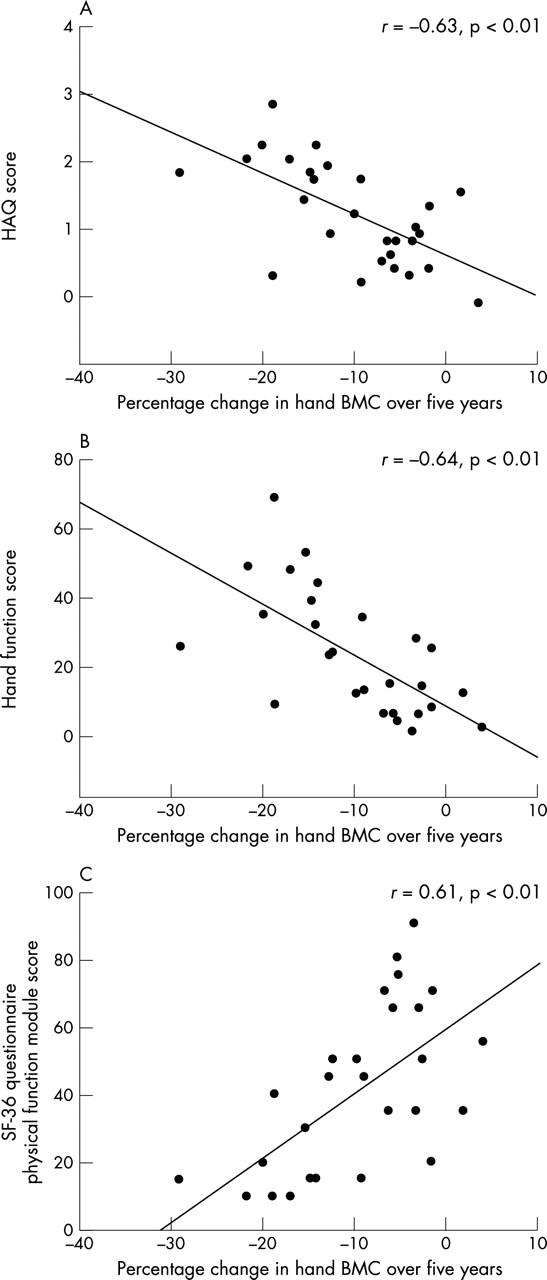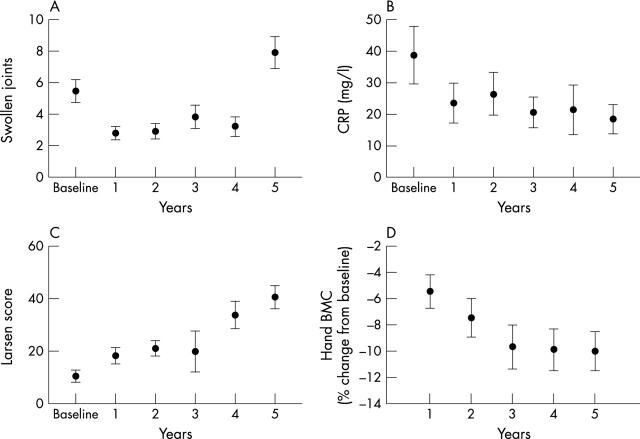Abstract
Methods: Tender and swollen joints in hands and body, HAQ score, Larsen score on hand radiographs, serum CRP, and hand BMC measurement by DXA were studied every six months for five years in 40 patients with early RA. At the final visit, patients completed the SF-36 and Duruoz hand function questionnaires.
Results: All patients completed two years and 29 completed five years' follow up. Hand BMC worsened over the first three years (percentage loss from baseline: mean (SD) -5.5 (7.2), -7.5 (8.4), -9.8 (9.4)) and stabilised over last two years (–9.9 (8.8), -10 (7.8)). Baseline disease activity and function correlated with hand BMC loss at five years (swollen joints in hands: r=-0.38, p=0.043; swollen joints in body: r=-0.47, p=0.01; HAQ: r=-0.52, p=0.004). Percentage change in hand BMC over five years correlated with SF-36 physical function (r=0.61, p<0.01), hand function (r=-0.64, p<0.01), HAQ score (r=-0.63, p<0.01) at five years. Relative risk of bad hand functional outcome at five years was significantly higher for patients with hand BMC loss of ⩾1.17 g (smallest detectable difference) than for patients with less bone loss within the first six months (OR=6.9, 95% CI 1.3 to 34.5, p<0.02).
Conclusion: Early loss of hand BMC in patients with RA is a composite marker of disease activity and functional status and can predict poor functional outcome.
Full Text
The Full Text of this article is available as a PDF (193.5 KB).
Figure 1.
Changes in (A) number of swollen joints, (B) C reactive protein (CRP), (C) Larsen score, and (D) percentage loss of hand BMC from baseline over five years. Mean (SE).
Figure 2.

Correlation between cumulative loss of hand BMC over five years and other measures of outcome.



